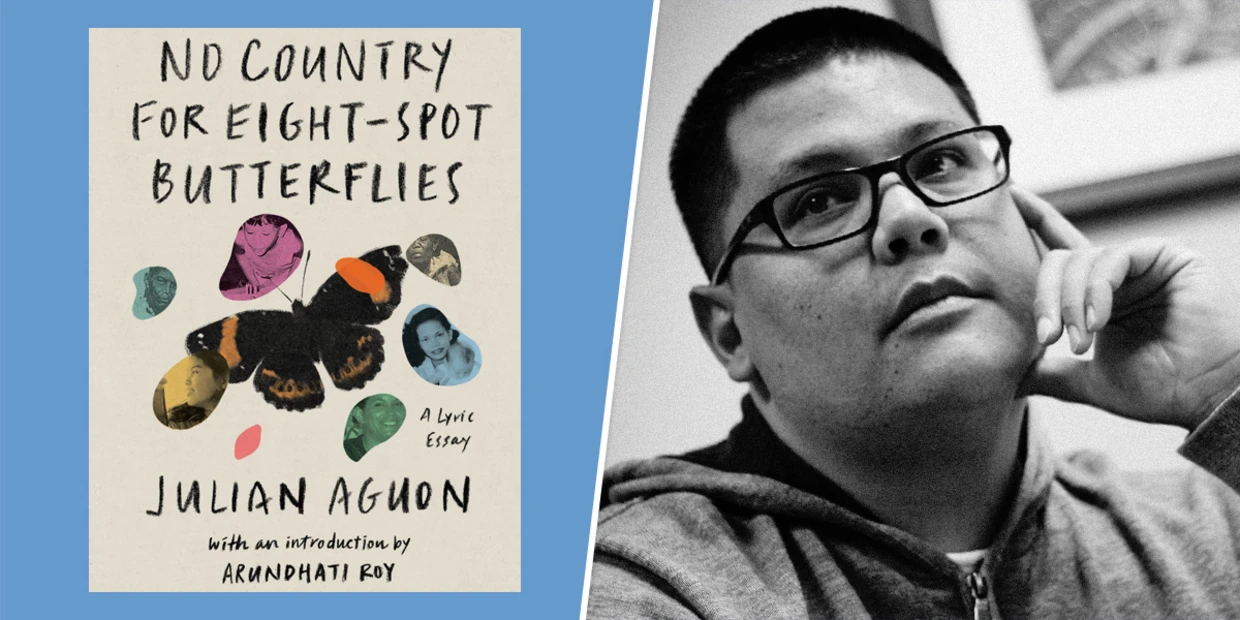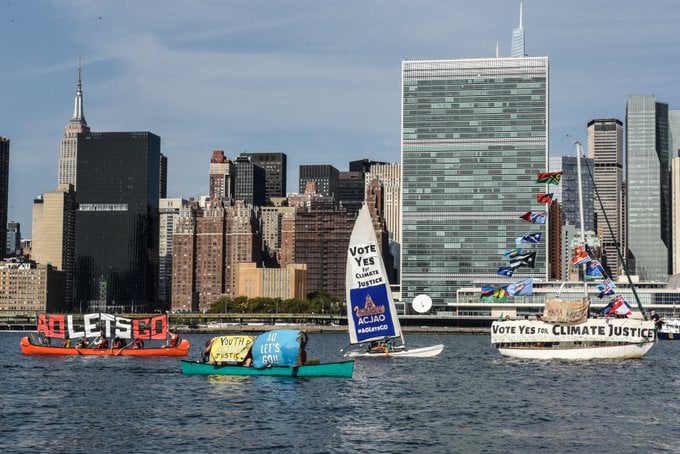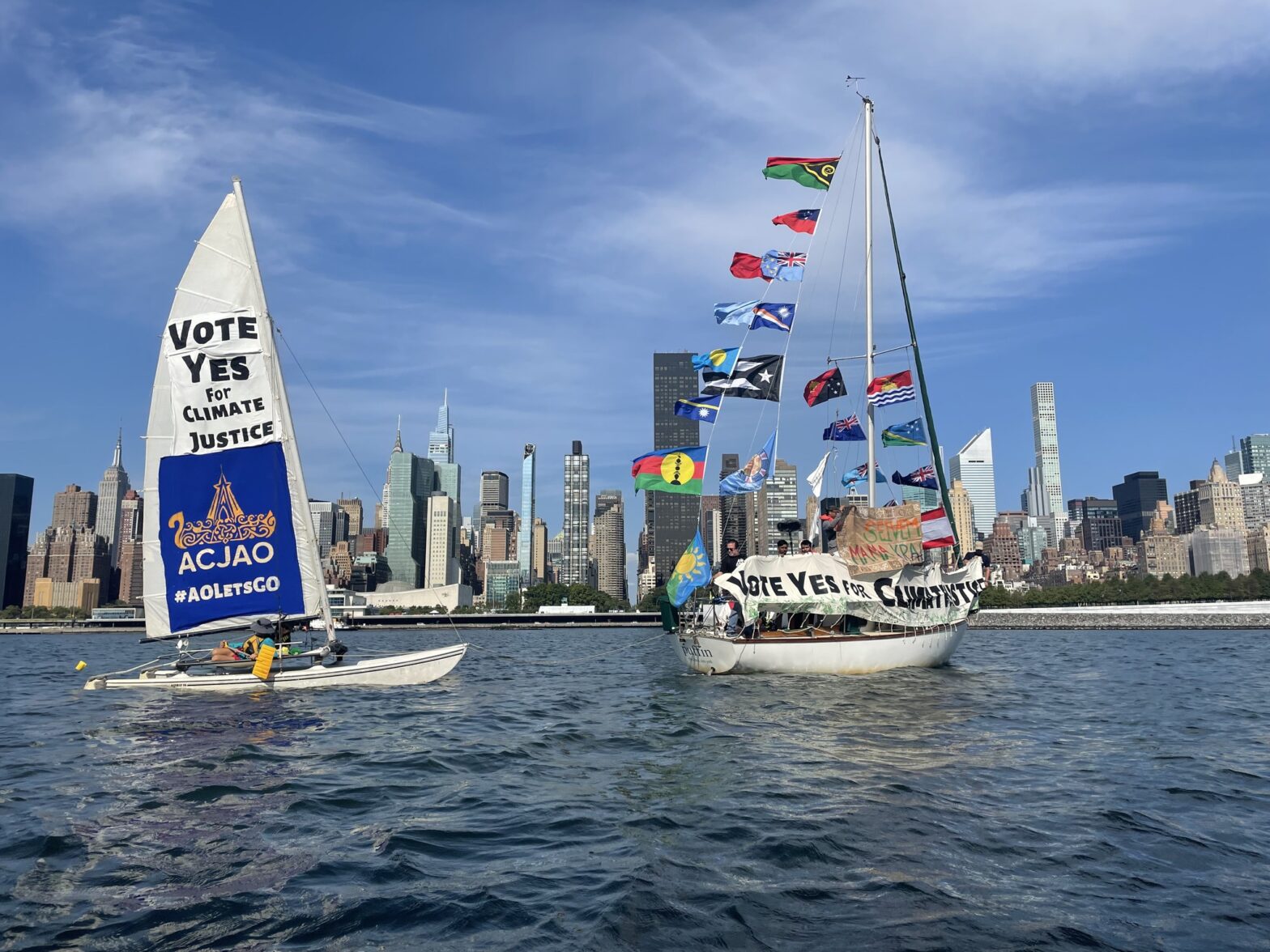With the need for urgent attention to climate crisis in the Pacific, climate campaign manager writes, “for years, our pleas for help have fallen on deaf ears….”
In Vanuatu, the land I see today is different from the land captured in photographs from my childhood. As a child, I played on the sandy beach down the road from my home.
Today, rising sea levels means the ocean is lapping at my front door. All the places I grew up, where my parents grew up, are now gone. The tombstones of our ancestors are half-submerged in water. They will soon disappear altogether.
Vanuatu is one of the most at-risk countries for climate disasters in the world.
It’s not just the slow, painful swallowing of my home by the ocean, but also the fierce rapid devastation caused by more severe weather, such as climate change-fuelled tropical cyclones, that is causing these losses.
Everyone in Vanuatu has a cyclone story to tell. Mine began on the morning of 15 March 2015, when Tropical Cyclone Pam, which had already wreaked havoc across much of the South Pacific, grew to a category five – the deadliest – and made landfall in Vanuatu.
At the time, I was 26 and living in New Caledonia. I heard over a crackly radio Vanuatu had been hit hard. Knowing our family home would not have withstood the cyclone, I desperately began calling my parents, siblings, and even our neighbours. No one answered. I expected the worst.
It was a gruelling 24 hours, and I was unable to sleep or eat before I finally learned my family were safe. Others had not been so lucky. At least 11 people died, while 132,000 people were impacted, including 54,000 children. It felt like everything had been destroyed – the recovery would take years and cost Vanuatu hundreds of millions of dollars.
I’ve had people say I was lucky for not being in Vanuatu at the time, but the feeling I had, of not knowing what had happened to my family, lingers to this day. It haunts me, but it also drives me. I have worked ever since to mitigate the impacts of disasters on my people and lobby leaders to take the climate crisis seriously.
This year, Vanuatu declared a climate emergency and announced an AUD$1.7 billion (US$1.1 billion) plan to cushion its impacts – a significant step in preparing us for a more hostile, increasingly uncertain future.
This is an enormous cost for a small country, especially one far less responsible for the climate crisis in the first place – an unfair reality facing many small island states.
For years, our pleas for help have fallen on deaf ears while we have been left to navigate the complexities of managing these impacts ourselves, by building sea walls and other defensive structures. But the sea just keeps on coming.
In my work as a climate campaign manager for Save the Children, I have spent a lot of time with kids. They have a lot to fear, but in me, they have instilled a new sense of hope.
One 12-year-old boy, who has experienced two devastating cyclones and unprecedented drought in his short life, urged his community to plant mangroves to deter rising sea levels – and they listened.
His initiative has been so successful, it has now spread to six other communities nearby.
It is this kind of bold and hopeful advocacy from Vanuatu’s children that is already leading to some major first steps from governments and institutions. Among these is the signing of a major climate finance deal this week by the Green Climate Fund, the government of Vanuatu and Save the Children that will see AUD$47 million (US$32 million) invested in a community-based climate adaption expected to reach more than 90,000 people – or nearly half of the country’s rural population.
This is significant and will better the lives of thousands of vulnerable children in Vanuatu. But we must go further. The deal signed today, also partly funded by Australia’s Department of Foreign Affairs and Trade, should be used as a blueprint by governments around the world. Developed nations in particular must support climate adaptation programs in countries that have created the least emissions but where the impacts of the climate crisis are striking hardest.
The climate crisis is the greatest threat to humanity. Millions of children around the world will suffer if governments fail to listen to their calls to act now and protect their futures.
This opinion was written by Stephanie Stephens (the climate campaign manager for Save the Children Vanuatu), originally published at The Canberra Times on 12 September 2022, reposted via PACNEWS.



